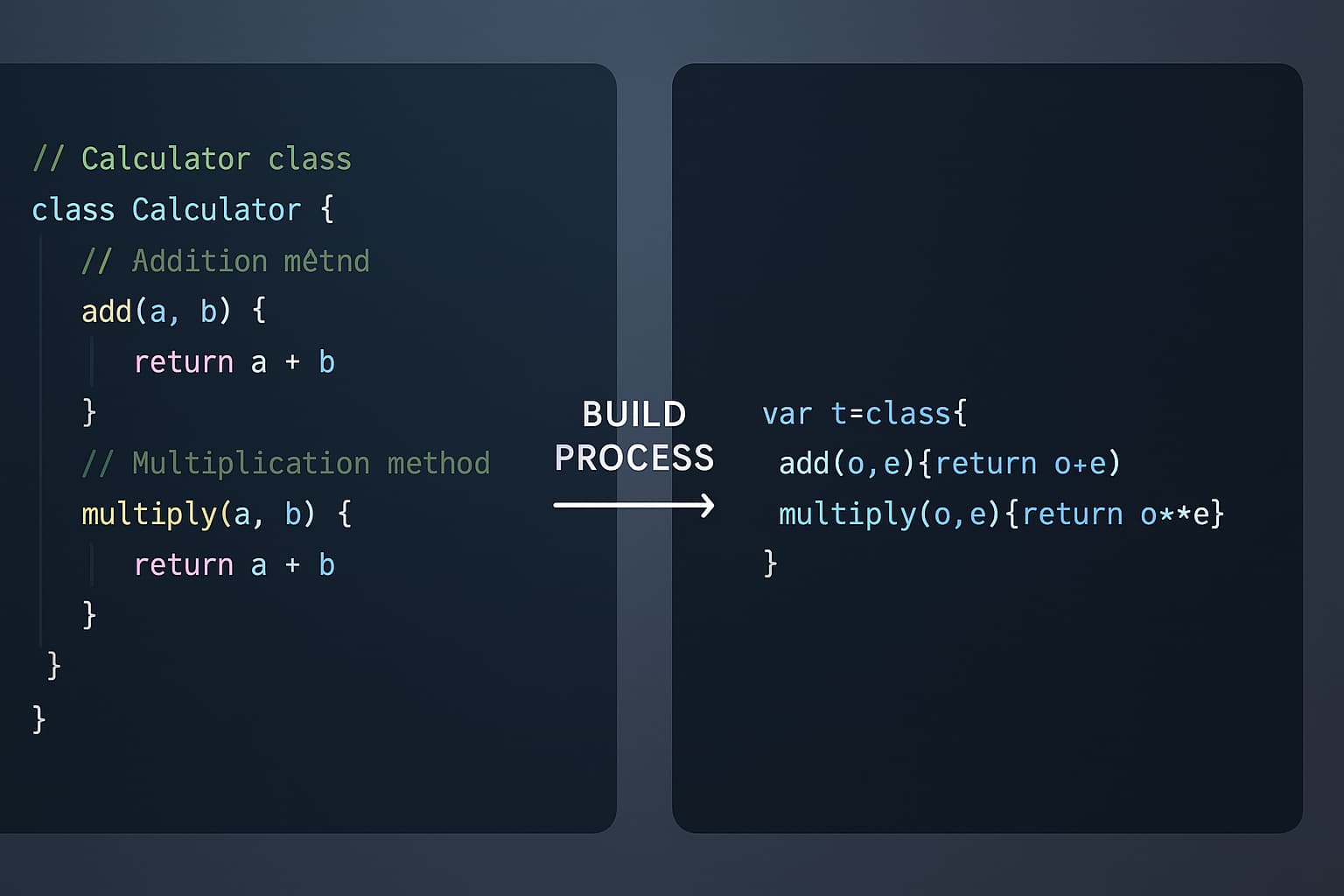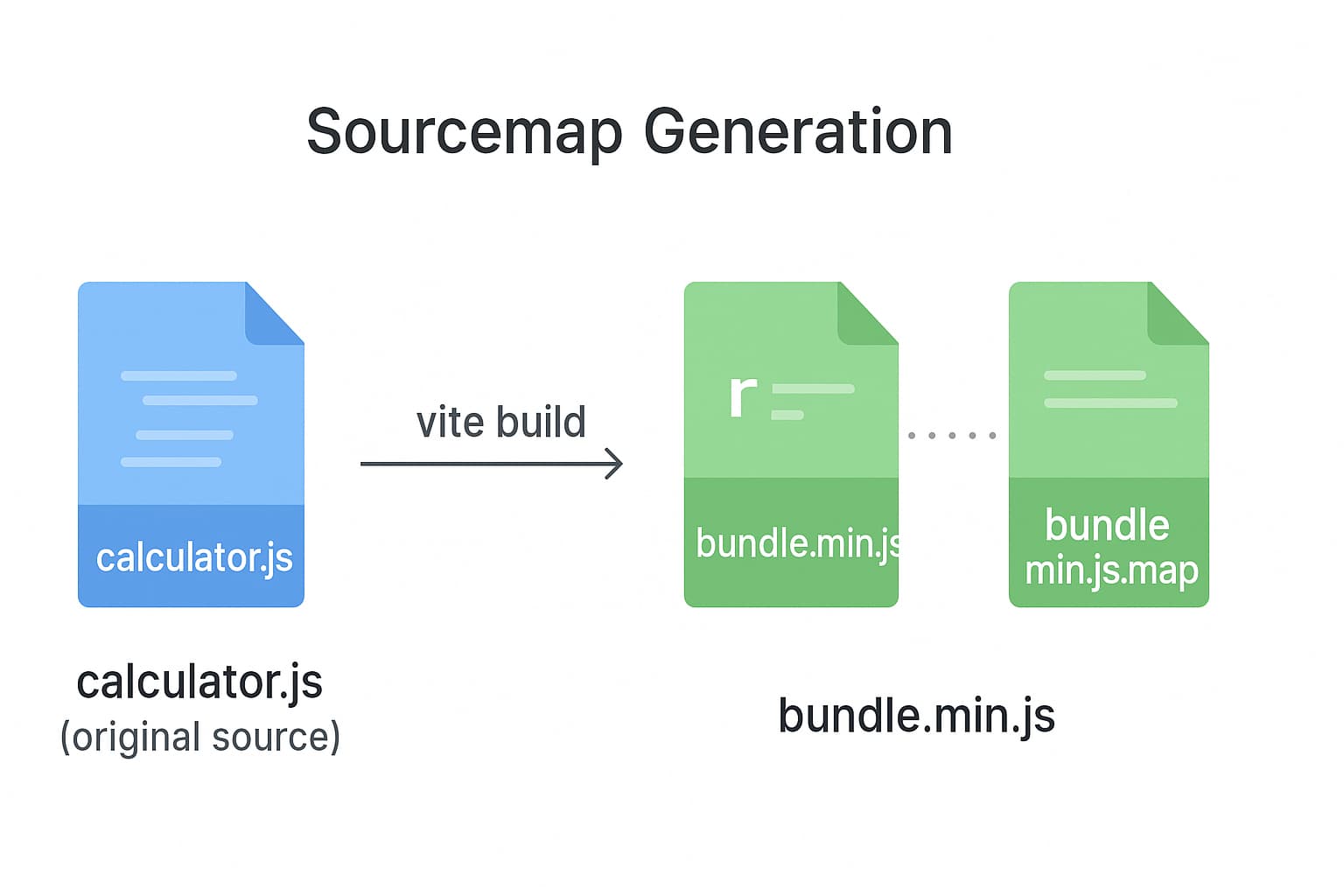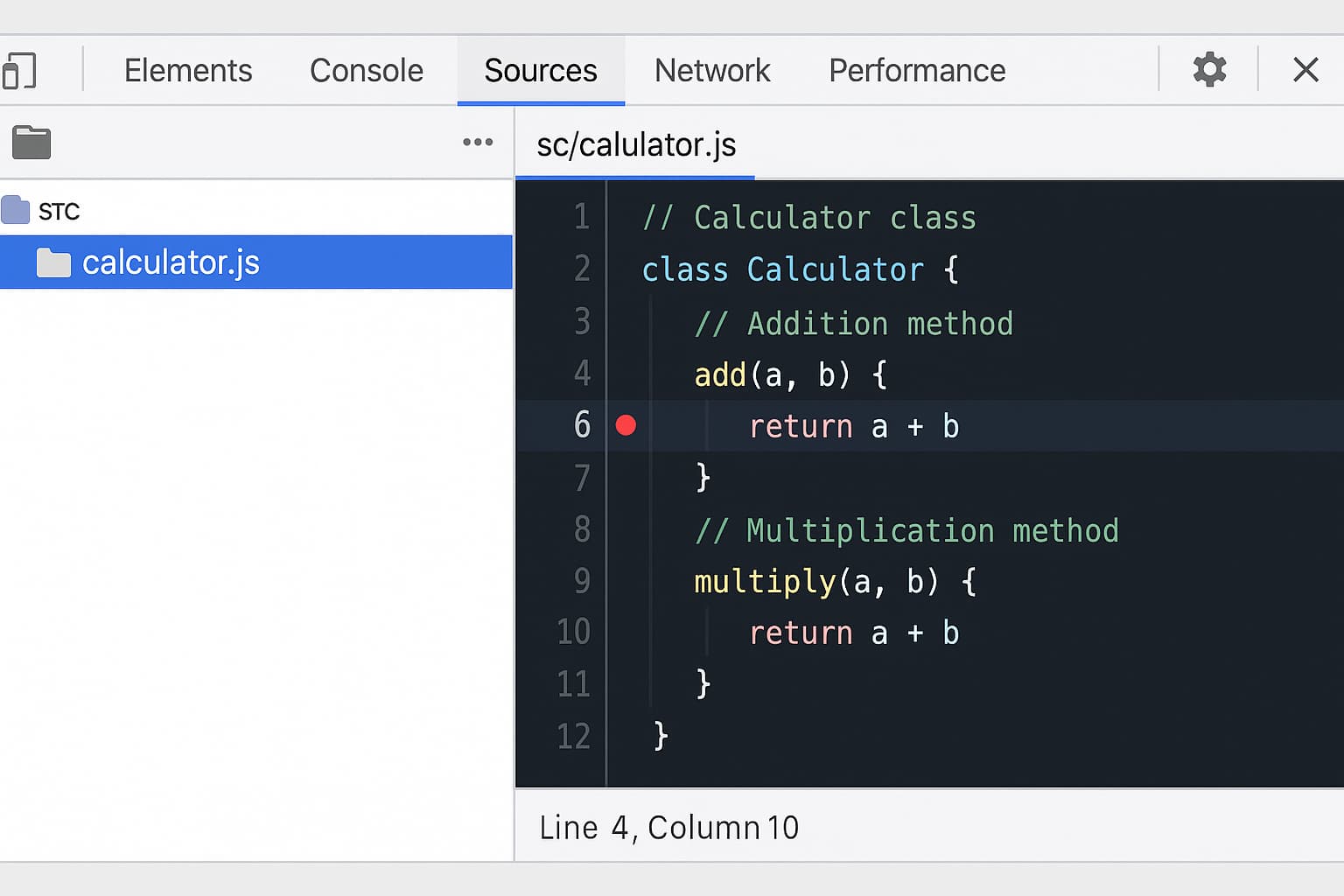- javascript
- debugging
- sourcemaps
- development

Introduction
Ever opened your browser's dev tools to debug some JavaScript, only to find yourself staring at a wall of minified, unreadable code? You know, those endless lines that look like function a(b,c){return b+c} instead of your beautifully written and commented original code.
That's where sourcemaps come to the rescue. They're like a GPS for your browser's debugger, helping it navigate from the minified wasteland back to your original, readable code.
What are sourcemaps?
A sourcemap is a file that maps the minified/transformed code back to the original source code. Think of it as a translator that tells your browser "hey, this minified mess on line 1, column 453 actually corresponds to line 23, column 12 in your original file."
When you build modern JavaScript applications, your code goes through various transformations - minification, bundling, transpilation from TypeScript or modern ES6+ to older JavaScript. All these processes make your code unrecognizable for debugging purposes.
Sourcemaps solve this by creating a bridge between what the browser runs and what you actually wrote.
How do sourcemaps work?
Sourcemaps use a special JSON format that contains mapping information. Here's a simplified version of what a sourcemap looks like:
{
"version": 3,
"file": "bundle.min.js",
"sourceRoot": "",
"sources": ["src/index.js", "src/utils.js"],
"sourcesContent": ["const add = (a, b) => a + b;\nconsole.log(add(2, 3));", "// utils functions here"],
"names": ["add", "a", "b", "console", "log"],
"mappings": "AAAA,MAAM,IAAI,CAAC,EAAE,CAAC,KAAK,CAAC,GAAG,CAAC"
}The mappings field is where the magic happens. It uses a format called VLQ (Variable Length Quantity) encoding to efficiently store the position mappings between source and generated code.
Types of sourcemaps
There are several types of sourcemaps, each with different trade-offs:
- Inline sourcemaps: Embedded directly in the JavaScript file as a base64-encoded data URL
- External sourcemaps: Separate
.mapfiles referenced by the JavaScript file - Hidden sourcemaps: External sourcemaps without a reference in the JavaScript file (useful for production error reporting)
Lab time: Creating your own sourcemap
Let's build a simple example to see sourcemaps in action. We'll start with some clean code and see how it looks after minification.
Step 1: Set up the project
Create a new directory and initialize it:
mkdir sourcemap-lab
cd sourcemap-lab
npm init -yStep 2: Create the source files
Create a file called src/calculator.js:
/**
* A simple calculator class
*/
class Calculator {
/**
* Add two numbers
* @param {number} a - First number
* @param {number} b - Second number
* @returns {number} The sum
*/
add(a, b) {
console.log(`Adding ${a} + ${b}`);
return a + b;
}
/**
* Multiply two numbers
* @param {number} a - First number
* @param {number} b - Second number
* @returns {number} The product
*/
multiply(a, b) {
console.log(`Multiplying ${a} * ${b}`);
return a * b;
}
}
// Create an instance and use it
const calc = new Calculator();
const result1 = calc.add(5, 3);
const result2 = calc.multiply(4, 7);
console.log('Results:', result1, result2);Create src/index.js:
import { Calculator } from './calculator.js';
const calculator = new Calculator();
const sum = calculator.add(10, 20);
const product = calculator.multiply(6, 9);
console.log(`Sum: ${sum}, Product: ${product}`);Step 3: Install Vite
We'll use Vite to bundle and minify our code:
npm install --save-dev viteStep 4: Configure Vite
Create vite.config.js:
import { defineConfig } from 'vite';
export default defineConfig({
build: {
sourcemap: true, // This generates external sourcemaps
minify: true,
rollupOptions: {
input: 'src/calculator.js',
output: {
entryFileNames: 'bundle.min.js',
},
},
},
});Step 5: Build and compare
Add a build script to your package.json:
{
"scripts": {
"build": "vite build"
}
}Run the build:
npm run buildNow check your dist folder. You'll find:

bundle.min.js- The minified JavaScriptbundle.min.js.map- The sourcemap file
Open bundle.min.js and you'll see something like this mess: (or even worse, you will see this in a single line)
var t = class {
add(o, e) {
return console.log(`Adding ${o} + ${e}`), o + e;
}
multiply(o, e) {
return console.log(`Multiplying ${o} * ${e}`), o * e;
}
};
const o = new t(),
e = o.add(5, 3),
l = o.multiply(4, 7);
console.log('Results:', e, l);
//# sourceMappingURL=bundle.min.js.mapNotice the comment at the bottom? That's how the browser knows where to find the sourcemap.
Step 6: Test in the browser
Create an index.html file:
<!DOCTYPE html>
<html>
<head>
<title>Sourcemap Lab</title>
</head>
<body>
<h1>Check the console!</h1>
<script src="dist/bundle.min.js"></script>
</body>
</html>Open this in your browser and check the developer tools. When you look at the Sources tab, you should see your original calculator.js file structure, not the minified version. You can set breakpoints and debug as if you were working with the original code.

Different sourcemap configurations
You can experiment with different sourcemap types by changing the sourcemap option in your Vite config:
// No sourcemaps
sourcemap: false;
// External sourcemaps (separate .map file)
sourcemap: true;
// Inline sourcemaps (embedded in the bundle)
sourcemap: 'inline';
// Hidden sourcemaps (no reference in the bundle)
sourcemap: 'hidden';Production considerations
Sourcemaps are incredibly useful, but they come with trade-offs in production:
Pros:
- Better error reporting and monitoring
- Easier debugging of production issues
- Stack traces point to original code
Cons:
- Larger file sizes (though maps can be served separately)
- Potential security concerns (exposing source code)
- Additional build complexity
Many teams use hidden sourcemaps in production - they generate the maps for error reporting tools but don't reference them in the deployed JavaScript.
Conclusion
Sourcemaps are one of those invisible technologies that make our development lives significantly better. They bridge the gap between the optimized code that browsers run and the readable code we actually write.
Next time you're debugging minified JavaScript and can magically see your original code, you'll know there's a hardworking sourcemap behind the scenes making it all possible.
The lab we built shows just the basics, but sourcemaps work with any transformation tool - TypeScript, Babel, Rollup, Vite, you name it.
Further reading
Affiliate Links
Using these referral links helps support my work. I only recommend products I use and fully trust. Any of the financial links do not constitute financial advice, recommendations or endorsements.
